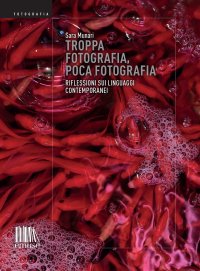Felice Palma. Massa 1583-1625. Collezione / Collection.
Texts by Andrei Cristina, Ciarlo Nicola, Federici Fabrizio, Claudio Casini and Sara Ragni.
Italian and English Text.
Pontedera, 2024; bound in a case, pp. 289, b/w and col. ill., b/w and col. plates, cm 24,5x34.
(L'Oro Bianco. Straordinari Dimenticati. The White Gold Forgotten Masters).
cover price: € 160.00
|
Books included in the offer:
Felice Palma. Massa 1583-1625. Collezione / Collection.
Texts by Andrei Cristina, Ciarlo Nicola, Federici Fabrizio, Claudio Casini and Sara Ragni.
Italian and English Text.
Pontedera, 2024; bound in a case, pp. 289, b/w and col. ill., b/w and col. plates, cm 24,5x34.
(L'Oro Bianco. Straordinari Dimenticati. The White Gold Forgotten Masters).
FREE (cover price: € 160.00)
Le botteghe del marmo
Italian and English Text.
Ospedaletto, 1992; bound, pp. 153, 10 b/w ill., 60 col. ill., cm 24x29.
(Immagine).
FREE (cover price: € 34.49)
Museo Stefano Bardini. I Bronzetti e gli Oggetti d'Uso in Bronzo
Edited by Nesi A.
Firenze, 2009; paperback, pp. 191, 102 b/w ill., 7 col. ill., cm 17x24,5.
(Museo Stefano Bardini).
FREE (cover price: € 30.00)
Bronzetti e Rilievi dal XV al XVIII Secolo
Bologna, 2015; 2 vols., bound in a case, pp. 729, ill., col. plates, cm 21,5x30,5.
FREE (cover price: € 90.00)
Dante, Moses and the Book of Islam. Visualizing the Qur'an, from Byzantium to Filippino Lippi's Adoration of the Golden Calf
Francesca Morosini
Libreria Editrice L'Erma di Bretschneider
English Text.
Roma, 2024; paperback, pp. 359, 111 col. ill., cm 17x24.
(Circolarità Mediterranee / Mediterranean Circularities . 5).
series: Circolarità Mediterranee / Mediterranean Circularities .
ISBN: 88-913-3293-3 - EAN13: 9788891332936
Subject: Essays (Art or Architecture),Maps, Documents, Old and Rare Books,Painting
Period: 1400-1800 (XV-XVIII) Renaissance
Languages: 
Weight: 0 kg
Sara Munari € 17.10
€ 18.00 -5 %
Marco Cassini € 14.25
€ 15.00 -5 %
















